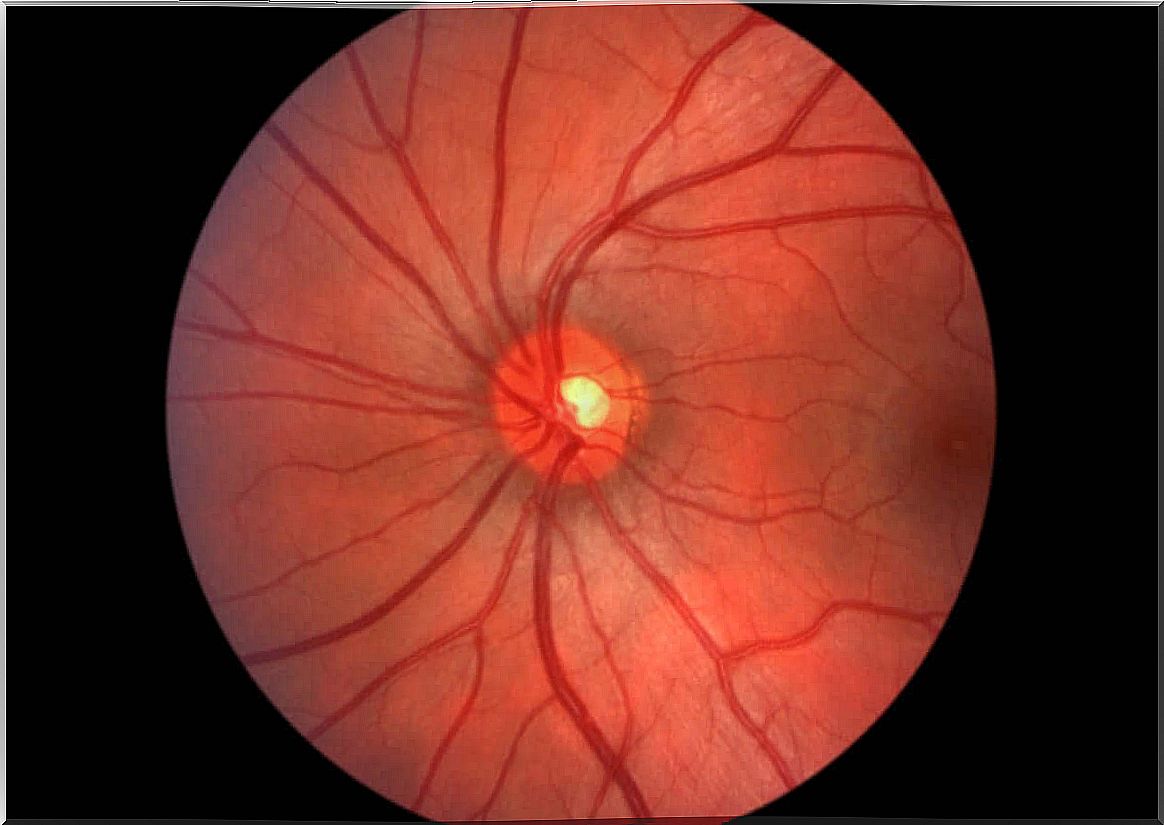What You Need To Know About Diabetes Eye Disease

High blood sugar is a condition that affects various systems and organs. And it does so silently. Diabetes can lead to eye diseases, a group of eye problems that can affect people with this condition.
While experts often discuss the cardiovascular impact of diabetes, there isn’t much talk about how it can affect vision. Eye disease caused by diabetes can lead to total blindness. In addition, most of the conditions it includes are due to poorly controlled diabetes.
Why do eye diseases due to diabetes occur?
Diabetes is a chronic glucose-related disease. The pancreas cannot make enough insulin or the tissues cannot use it correctly.
Insulin is the main substance that allows glucose to enter cells. When it doesn’t do its job, blood glucose levels rise. This damages tissues.
According to experts at the Mayo Clinic (Spanish link), eye disease from diabetes occurs because high blood sugar levels damage the blood vessels at the back of the eye (retina).
Diabetes is considered a silent disease that, if not noticed, can lead to serious complications. In fact, as the National Institute of Diabetes and Digestive and Kidney Diseases notes, its symptoms are often associated with a change in medication or disease control.
However, long-term damage occurs even during prediabetes. It is a period when glucose levels are higher than normal. However, they are not high enough to allow medical professionals to diagnose the disease.
Main eye diseases due to diabetes

Eye disease due to diabetes is a group of eye problems that occur as a result of this disease. The most common are:
- diabetic retinopathy
- diabetic macular edema
- glaucoma and cataract
We explain them all in detail below.
Diabetic retinopathy
Diabetic retinopathy is a condition that results from damage to the blood vessels that carry oxygenated blood to the retina. The retina is the light-sensitive layer that lines the inside of the eye (at the back of the eye).
Diabetic retinopathy is one of the most common eye problems caused by diabetes. It usually manifests itself in stages. As the American Academy of Ophthalmology explains, the first stage is non-proliferative diabetic retinopathy.
What happens is that the blood vessels weaken or leak into the retina. At this point, diabetic macular edema occurs, which often causes blurred vision. In some cases it can lead to ischemia of the blood vessels.
As retinopathy progresses, it reaches the proliferation phase. This phase consists of the growth of new blood vessels (this process is also called neovascularization or angiogenesis). These blood vessels are weak and can become damaged and bleed.
Bleeding damages eyesight. Scar tissue can also form, making the inside of the eye increasingly opaque. Light cannot reach the retina properly.
Diabetic macular edema
Diabetic macular edema is another common eye disease caused by diabetes. In fact, as we explained in the previous section, it usually occurs in retinopathy. It is the accumulation of fluid in the macula that causes inflammation.
The macula is the area near the center of the retina. It is responsible for high-resolution central color vision. This is why diabetic macular edema can lead to vision loss or even blindness over time.
Glaucoma
This is another common eye disease caused by diabetes. An increase in pressure in the eye causes this. The drainage system of the eye is damaged, causing fluid to build up in the front part of the eye.
This damages the optic nerve. As the Mexican Diabetes Federation explains (Spanish link), glaucoma is considered the second leading cause of blindness and the first leading cause of irreversible blindness.
The risk of people with diabetes who suffer from this condition is twice that of healthy people. Symptoms usually appear progressively and vision is gradually lost.
cataract
This is a condition that is also common in healthy people. In fact, it is linked to aging. It is a wear and tear process in which the lens becomes increasingly blurry.
This makes it difficult to see clearly. Experts consider it another eye disease due to diabetes because diabetes speeds up the process. In other words, those who suffer from diabetes get cataracts at a younger age than the rest.
When should you consult a specialist?
Diabetes eye disease is a term for a group of conditions that usually don’t show symptoms until the damage is significant. Experts therefore find it essential that people with diabetes routinely undergo comprehensive eye exams.
According to the Centers for Disease Control and Prevention, almost all eye problems caused by diabetes can be prevented. To do this, it is essential to detect the change early and strictly monitor blood sugar levels.
Medical professionals recommend that anyone diagnosed with diabetes have tests, such as an ophthalmoscopy, at least once a year. In fact, for those who also suffer from hypertension or high cholesterol, it is essential to have these tests more often.
Having consistently high blood sugar levels increases your risk of eye disease from diabetes. It is essential for people with diabetes to control their blood sugar levels throughout the day. This way they can adjust their treatment to avoid spikes in blood sugar.
What you need to remember is that if you are diagnosed with diabetes or prediabetes, medical consultations and checkups are essential. Don’t delay seeing your doctor with symptoms or complications.
Treatment of eye diseases due to diabetes

Drugs can treat the early stages of diabetic retinopathy. The most commonly used are anti-VEGF agents and corticosteroids. The first reduce the proliferation of blood vessels around the retina. Medical professionals inject them into the eye. They also reduce macular edema.
Corticosteroids control the swelling of the edema. However, a number of cases do not respond to medications and require surgery. According to the Hospital Clinic de Barcelona (Spanish link), medical professionals must resort to surgery in these cases:
- Very dense or recurrent vitreous hemorrhage.
- Macular edema that does not respond to treatment.
- retinal detachment.
Diabetes is a silent disease
Diabetes eye disease is a group of conditions that result from poor blood glucose control, especially in people who were diagnosed with diabetes many years ago. The most important thing to stress about these conditions is that most of them are preventable.
For this reason, it is essential for these patients to see their doctor every six months or annually. In addition, following all dietary and lifestyle recommendations can reduce the incidence.








